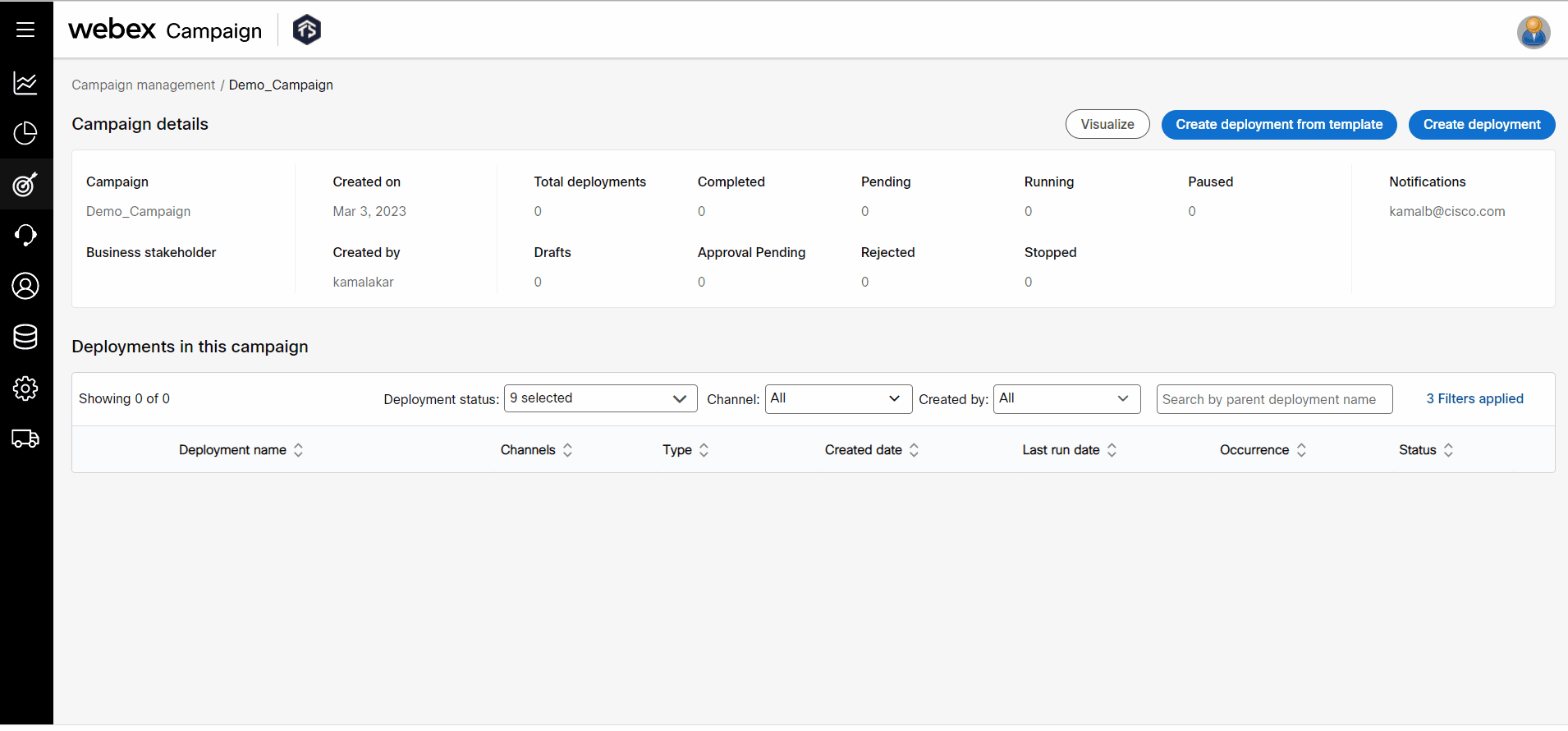Creating an SMS Deployment
In this tutorial, you’ll learn how to create and run an SMS deployment.
To create an SMS deployment, there are some prerequisites that need to be completed. If your username is assigned with an admin role, then you can complete all the steps to create a deployment. If your username is assigned to a role that has limited permissions, then you can create a deployment and send it for approval. Upon approval, the deployment can be activated.
Prerequisites for an SMS deployment:
- Access to Campaign management section
- A Campaign
- A Target Data for SMS channel
- A Test Contact with MSISDN as a header
- A Sender ID
- A Purpose
- A P&L
Step 1: Create a Deployment
A deployment is a set of instructions to process a campaign under the parent campaign.
To create a deployment.
- Navigate to Campaign management > Campaign List screen and click on the campaign in which you want to create a deployment.

- Click Create deployment on the campaign summary screen that appears. The campaign summary screen will display the status of all the deployments of the campaign. For more information on creating a deployment, go to the Creating a Deployment section.

- Select the deployment type as Promotion.
- Select the type of promotion as Simple promotion, mode of deployment as One time , and content type as Message.
- Select the channel as SMS and click Create.
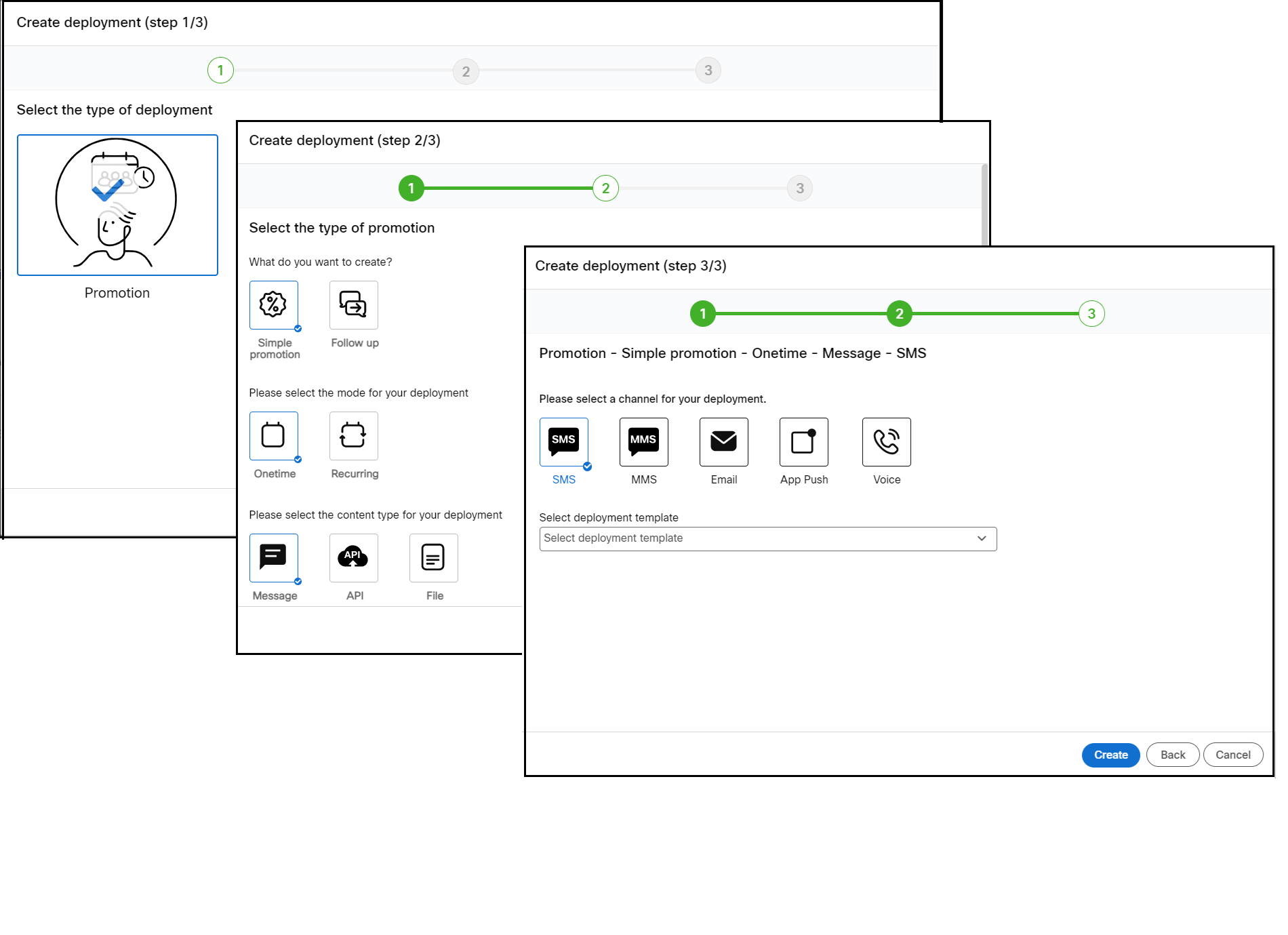
- The Deployment creation screen appears.
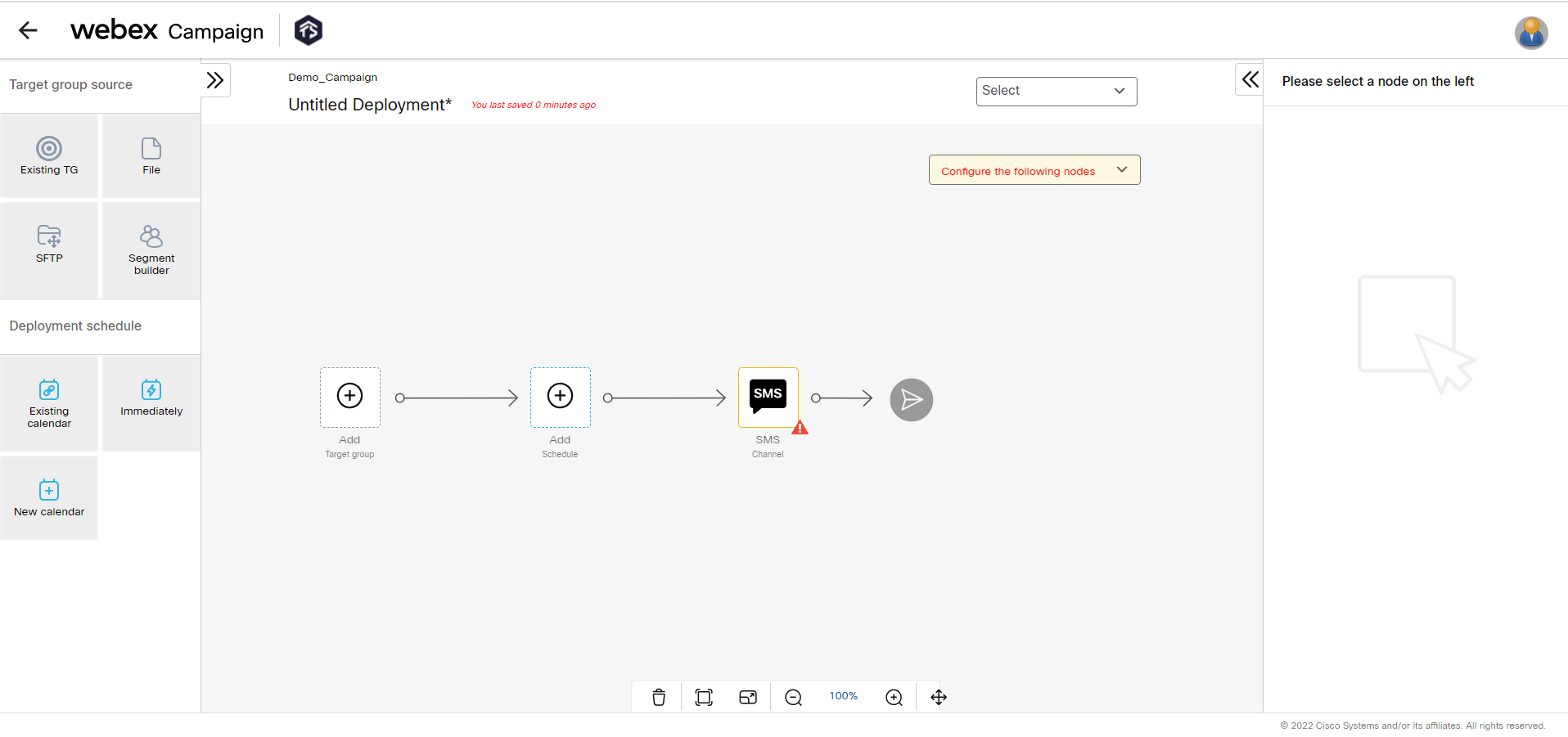
You have to configure each node in the deployment creation screen. The left panel will display different nodes that can be used to configure a node, The nodes are grouped based on their usage. On selecting a node the right panel will display the configuration options.
Step 2 Choose Your Recipients
In this step, the recipients of the campaign are selected. As mentioned in the prerequisites, a target group should already be uploaded to the Webex Campaign.
To select the recipients of the campaign:
- From the Target group source , drag and drop the Existing TG node onto the Target Group placeholder. We have chosen the Existing TG node because the target group is already uploaded as a prerequisite. For more information on adding a target group from different nodes, go to Target group source Nodes section.
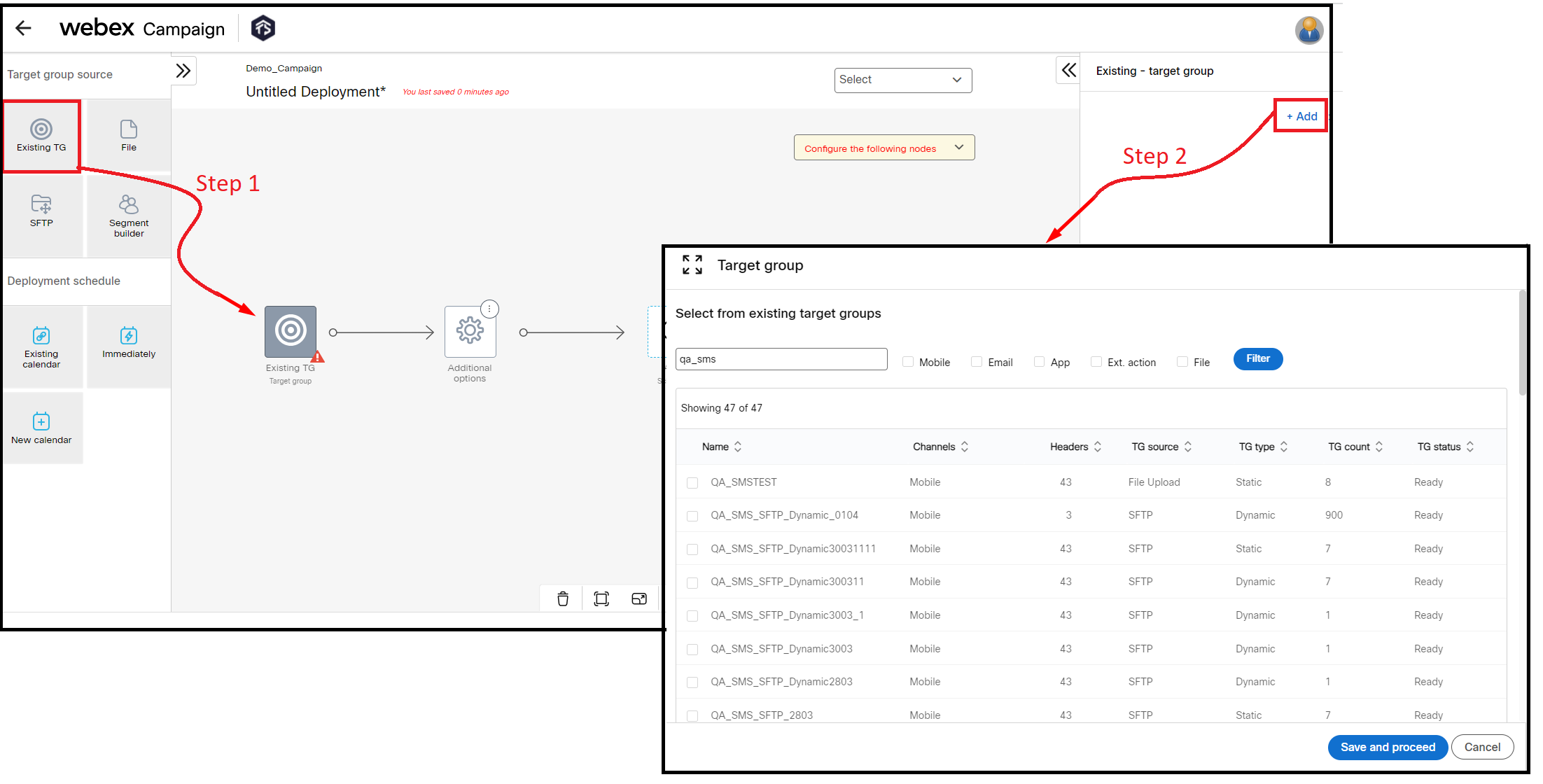
- Select the Existing TG node and click + Add from the right panel.
- Select the target group that was uploaded.
- Click Save and proceed to close the target group screen.
- Click Save changes.
Now the recipients are successfully configured for the deployment.
(Optional) Additional options Node
In this step, you can configure additional options for the target group such as applying an opt-out list, removing duplicates, applying contact frequency rules, and limiting the number of contacts in the target group.
To configure the options, select the Additional options node and configure the required option from the right pane:
- Exclude contacts from all opt-out lists: Enable this option to exclude contacts from all opt-out lists such as Tenant level, channel level, and category level.
- Apply contact frequency rule: Enable this option to control the maximum number of messages sent out to contacts depending on the channel and message purpose for a defined time window.
- Remove duplicates: Enable this option to remove duplicate mobile numbers from the Target Group.
- Limit the number of contacts: Enable this option to limit the number of contacts of the target group based on an absolute number of contacts or a percentage of contacts.
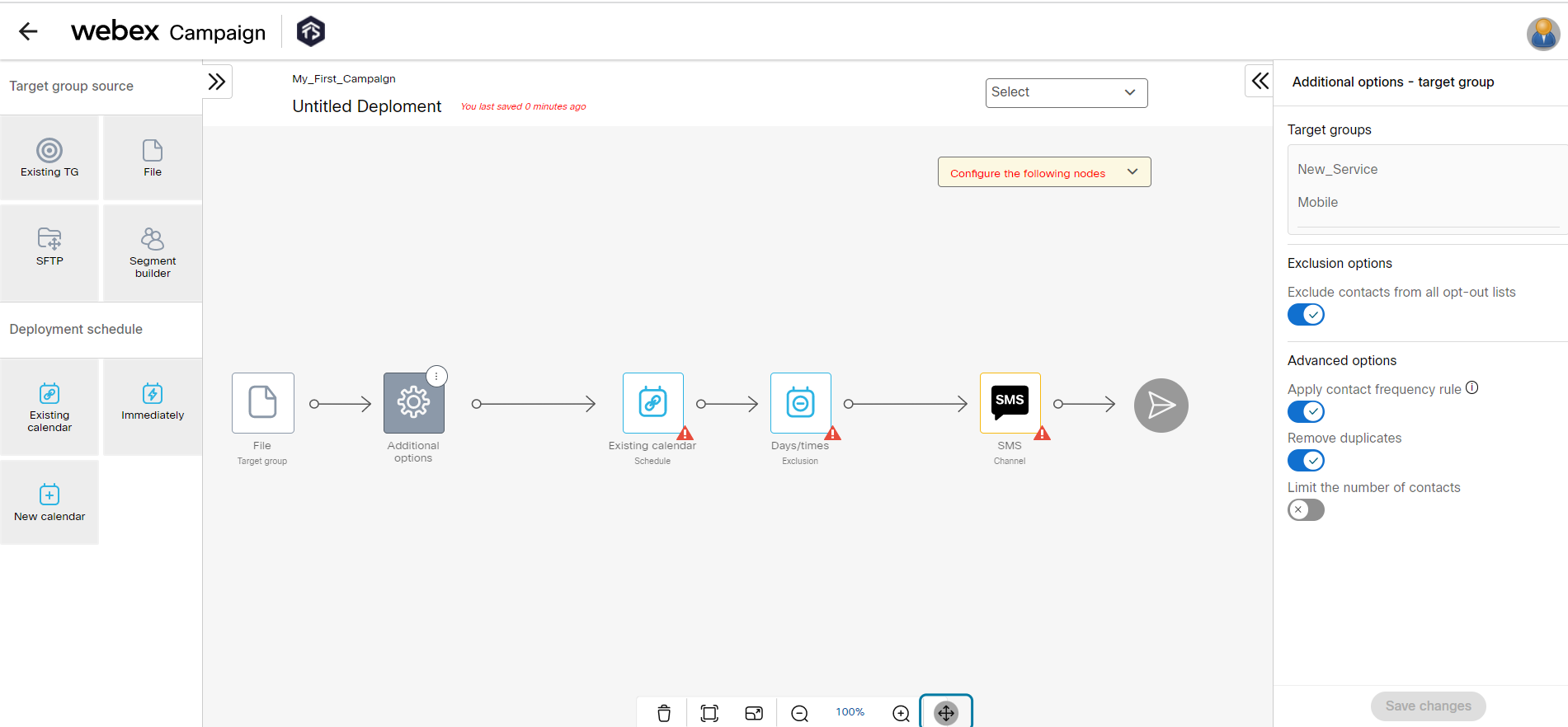
Step 3 Create a Schedule
In this step, select a schedule to send your campaign immediately, or create a schedule (a date and a time) to run the deployment in the future. For this tutorial, we will run the deployment Immediately as soon as the deployment is activated.
To configure the schedule:
- Drag and drop the Immediately node onto the Schedule node.
- Select the Schedule node. From the right panel, enter details for the following fields:
- Router: Select the router from the drop-down. This is predefined when the tenant is created.
- TPS: Enter the TPS in a range from 1 to 10 for the deployment. The higher the TPS the quicker the deployment execution.
- Enable auto TPS: (Optional) If you are not sure of the TPS that you should use for the deployment with respect to your target group, enable this option. By default, the UI will display 1 when Auto TPS is enabled. However, if the TPS increases during deployment running according to the schedule, the updated (increased) TPS value will be shown in the UI. The Auto TPS set the TPS based on the optimal TPS required to complete the deployment within the defined schedule; it does not attempt to maximise the throughput up to the system/router limit. The Auto TPS factor in only the specific deployment's volume and schedule, and does not consider the total traffic tenant.
If the Auto TPS calculated is not enough to push the entire Target Group within the schedule, then the remaining Target Group will be reported as the Message Not Pushed category in reports.
- Delivery confirmation needed: The default option is Yes. A message delivery confirmation is recorded in the database that can be viewed using the reports.
- Message validity: The maximum time frame the system re-tries sending a message to the target contact if their device is temporarily unavailable. For example, out-of-network connectivity or switched off.

- Click Save changes.
Step 4: Configure Exclusion Day/Times
During the exclusion day or times, the deployment is paused temporarily and resumes once the exclusion day or time has lapsed. The exclusion day or time is set by the administrator that is applicable to all campaigns across the tenant. To add a custom exclusion day or time, configure this node.
For more information on exclusion days or times, go to Exclusion days / times section.
For our tutorial, we will proceed with the default exclusion day or times. Select the Exclusion days/ times node and click Save changes.
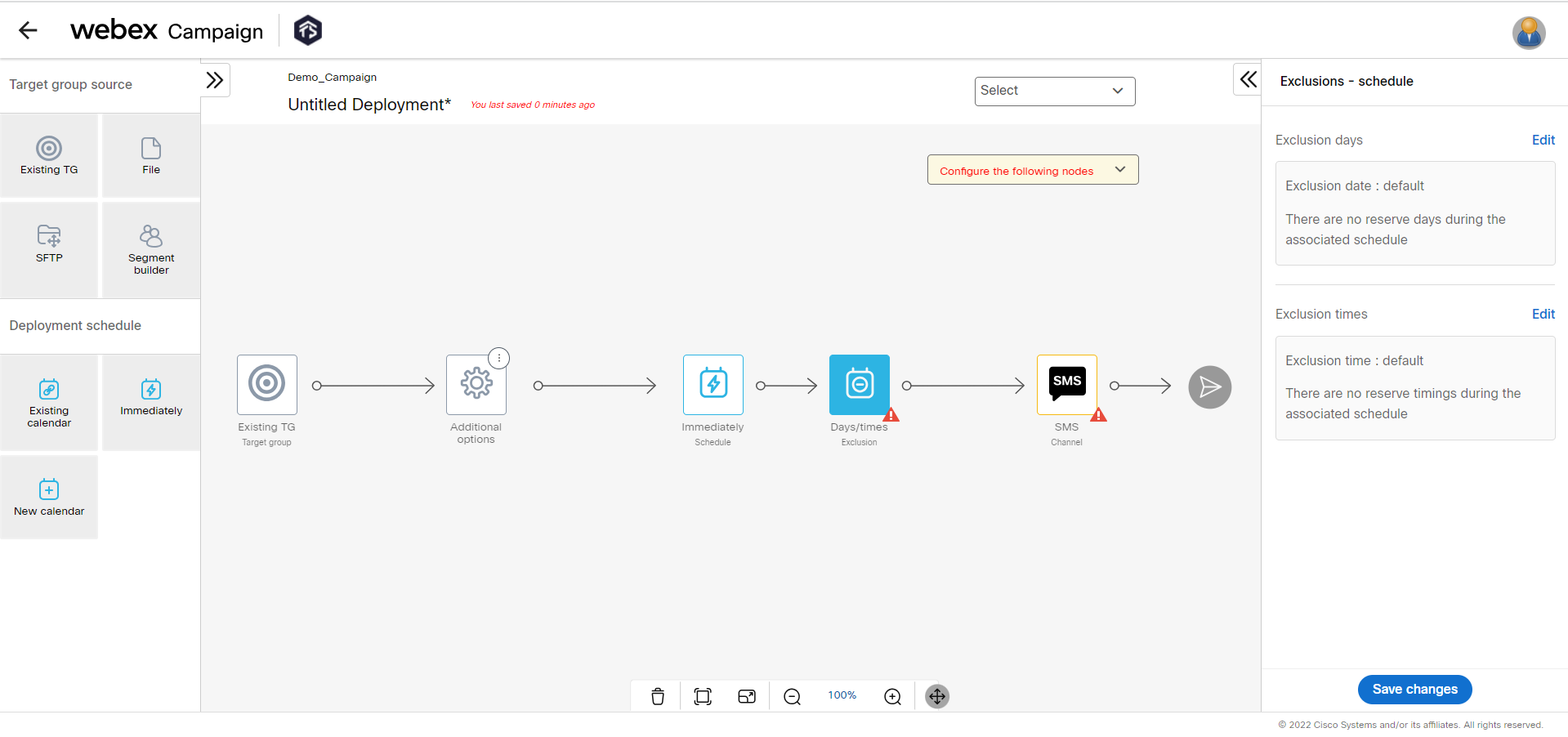
Now the schedule is successfully configured for the deployment.
Step 5: Create Your Message
In this step, the SMS content is configured. You can also add links and personalization to the content. We will proceed with a simple SMS message. To know more about SMS Content configuration, go to SMS Channel Node section.
To configure the simple SMS content:
- Select the SMS node. From the right panel, select a Sender ID from the drop-down.
- Click + Add . The SMS Content configuration screen appears.
- Enter SMS content such as "Welcome to Webex Campaign. This is my first SMS message." and click Save SMS content.

- (Optional) Click on the Preview and test to preview the deployment. For more information, go to Preview and Test section.
- Click Save changes.
Now all the nodes are configured.
Step 6: Save the Deployment
In this step, the deployment can be saved as a Draft or ready for Activation. The Deployment meta-tags are mandatory to activate a deployment. If you are not sure of the Deployment meta-tags that should be used, you can save the deployment and come back later to select the Deployment meta-tags.
To save the deployment as ready for activation:
- Select Save & exit. The Save deployment screen appears.
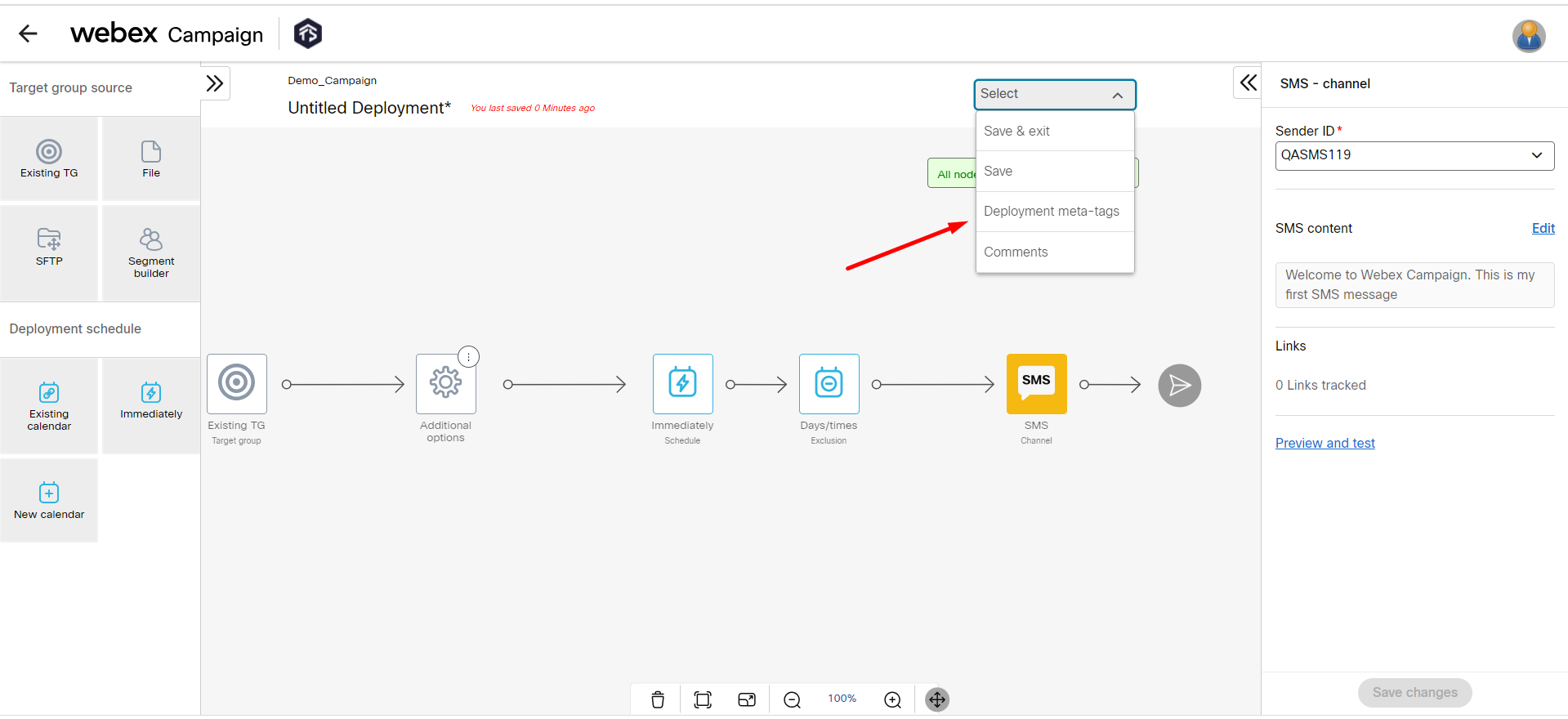
- Enter a name for the Deployment such as My_First_Deployment.
- Select a P&L to which you want to associate this deployment.
- Select one or more purposes from the Purpose drop-down.
- Click Save.
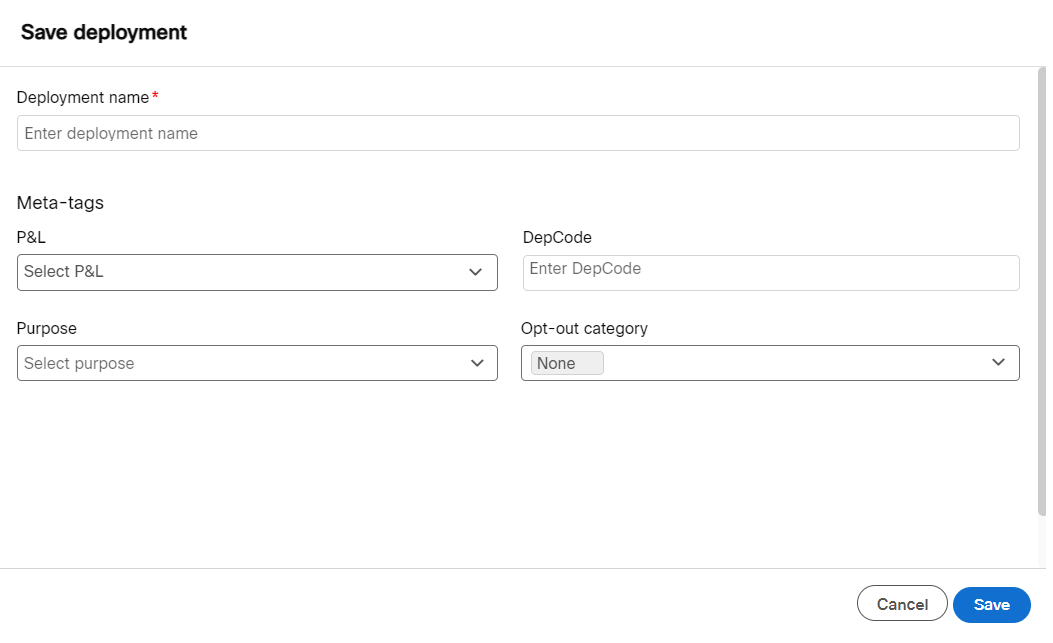
Now the deployment is ready for activation.
Step 7: Activate the Deployment
On the Campaign List screen, click the ellipses icon of the deployment and click Activate. You will receive notifications for various stages of the deployment.
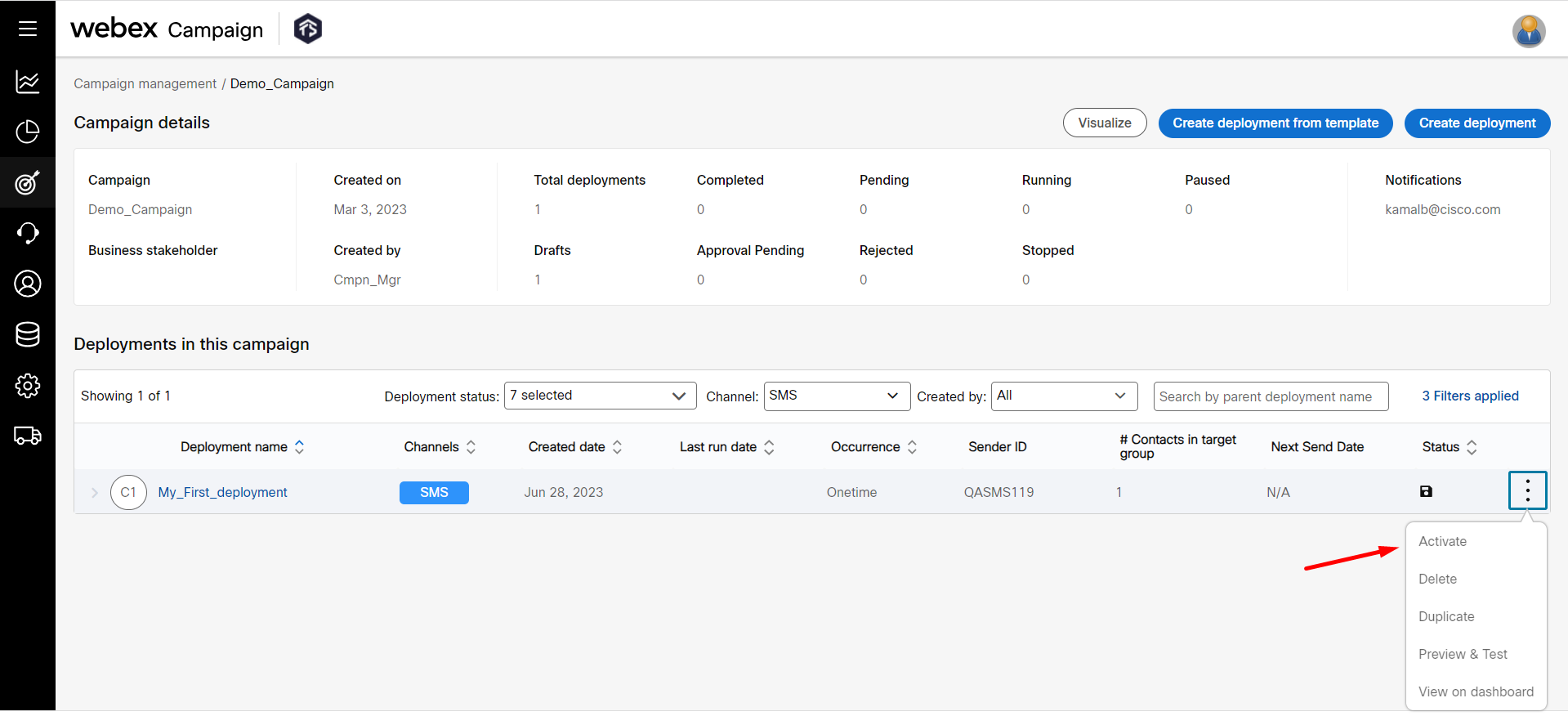
If the user does not have permission to approve their own created deployments, then instead of Activate button, you will notice Send for approval.
After the deployment is activated, you can go to the Dashboard section to view the performance of the deployment.

If you have questions, please contact your Webex Campaign account manager or Cisco Webex technical support team by phone or email:
- Europe / Middle East / Africa:
- Phone: +44 (0) 1494 750 600
- Email: [email protected]
- North America:
- Phone: +1-855-324-0970
- Email: [email protected]
<--
The system will automatically calculate the TPS based on the target group records.
-->
Updated 3 months ago
